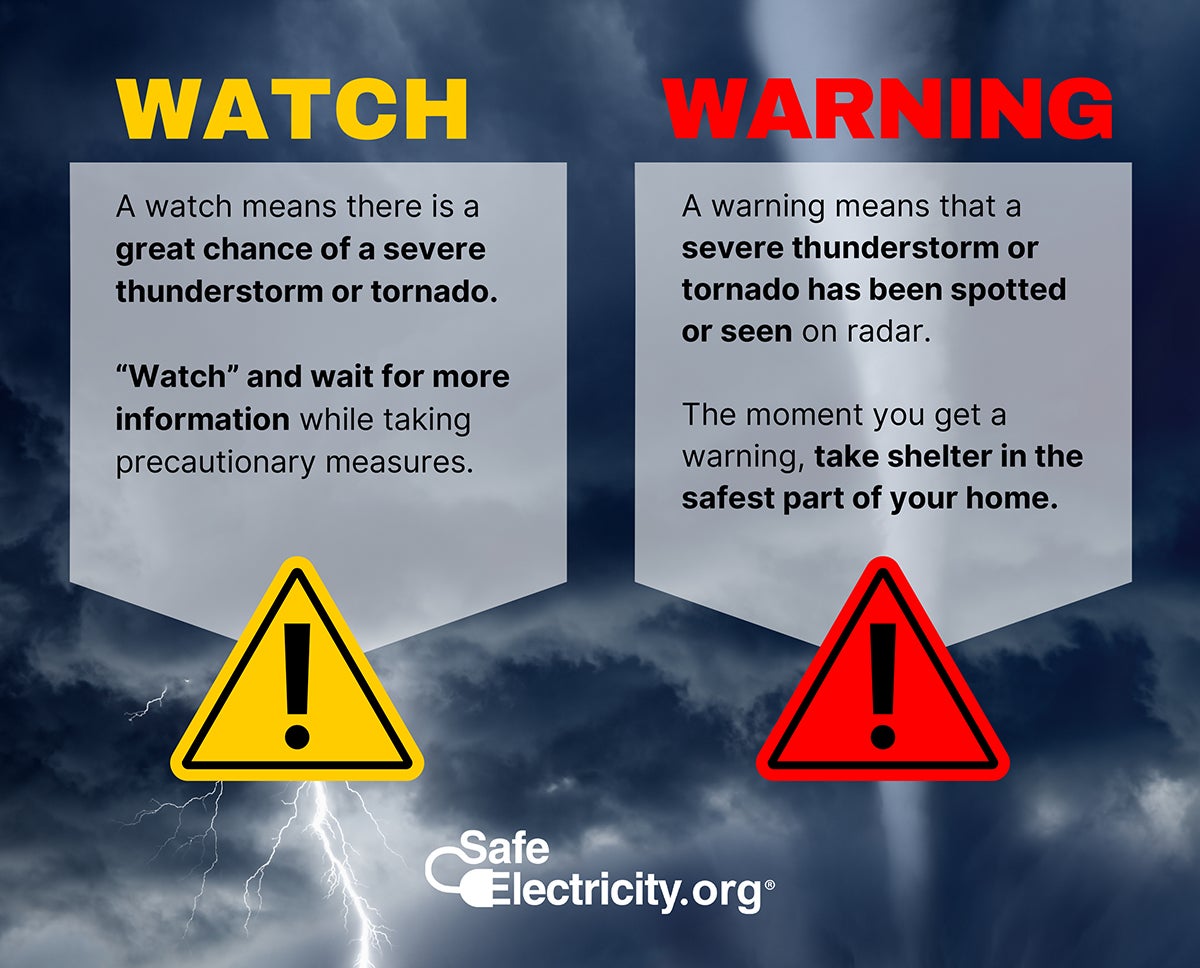Stormy Situations: Watch vs Warning - Know the Difference to Stay Safe
The presence of severe weather is a stark reminder of the power and unpredictability of Mother Nature. While tornadoes are a rare occurrence, the threat of one striking in your area can be frightening and overwhelming. Understanding the difference between a Watch and a Warning is crucial in taking the necessary precautions to ensure your safety. In this article, we will delve into the specifics of each, explaining what they mean and how to tell them apart.
Understanding Tornado Watches and Warnings
When a tornado is predicted to occur in your area, the National Weather Service (NWS) issues either a Watch or a Warning. These terms are not interchangeable, and it's essential to know the distinction between them.
A Tornado Watch is issued when conditions are favorable for tornadoes to develop. This usually occurs when a combination of atmospheric conditions, such as warm air at the surface, cool air above, and wind shear, come together to create a volatile environment. During a Watch, tornadoes are possible but not imminent. Residents are advised to remain vigilant and be prepared to take action at a moment's notice.
On the other hand, a Tornado Warning is issued when a tornado has been sighted or indicated by radar. This means that a tornado is imminent or already occurring in your area. When a Warning is issued, immediate action is necessary to ensure your safety.
What Happens When a Tornado Watch is Issued
When a Tornado Watch is issued, residents are generally advised to remain calm and monitor the situation closely. Here are some steps you can take during a Watch:
• Review your emergency plan with your family, including a safe place to go and a contact person in case of separation.
• Charge your phone and other devices in case the power goes out.
• Stock up on supplies, including water, non-perishable food, and a first aid kit.
• Keep important documents and valuables in a safe and accessible location.
• Stay informed through local news and weather reports, and sign up for emergency alerts from your local government.
What Happens When a Tornado Warning is Issued
When a Tornado Warning is issued, immediate action is necessary to ensure your safety. Here are some steps you can take during a Warning:
• Seek shelter immediately in a designated safe area, such as a basement or storm cellar.
• If no underground shelter is available, go to an interior room or hallway on the lowest floor of your building.
• Stay away from windows, doors, and exterior walls.
• Get under a sturdy table or desk and cover your head and neck with your arms.
• Do not try to outrun a tornado in your vehicle.
Preparing for a Tornado
While a Tornado Watch or Warning may seem daunting, preparation is key to staying safe. Here are some tips to help you prepare for a tornado:
Identifying Safe Spaces
A safe space is essential in case of a tornado. Here are some characteristics of a safe space:
• It should be underground or in a structure designed to withstand high winds.
• It should be interior, away from windows, doors, and exterior walls.
• It should be a room or area with a sturdy roof and walls.
Some common safe spaces include:
• Basements
• Storm cellars
• Tornado shelters
• Interior rooms on the lowest floor of a building
Understanding Tornado Signaling
Tornadoes can be difficult to detect, but there are some signs to look out for. Here are some common indicators of a tornado:
• Rotation: A rotating column of air is the most distinctive feature of a tornado.
• Funnel cloud: A funnel cloud is a cloud that extends from the base of a thunderstorm to the ground.
• Loud roar: A tornado can produce a loud roar, similar to the sound of a freight train.
• Large hail: Large hail can indicate the presence of a tornado.
Staying Informed
Staying informed is critical during severe weather events. Here are some ways to stay up-to-date:
• Sign up for emergency alerts from your local government.
• Download a weather app on your phone or tablet.
• Tune into local news and weather reports.
• Follow the National Weather Service on social media.
Conclusion
Understanding the difference between a Tornado Watch and a Warning is crucial in taking the necessary precautions to ensure your safety. By knowing what to expect and taking the right actions, you can minimize the risk of injury or loss of life during a severe weather event. Always prioritize your safety and the safety of those around you.
Chloandmatt Fansd
Hisashi Ouchi Real Po
Maureen Bates
Article Recommendations
- Billieilish Y
- Ranran Fujii Insta
- Candal
- Mikaylah
- Malcolm Gladwell Wife
- Maddie Price
- Blockchain
- King Von S Autopsy
- Lisa Liberati
- Sophie Raind



